Pinterest isn’t just another social media platform: it’s a visual search engine built to drive Pinterest traffic directly to your website without paid ads.
With over 518 million monthly active users looking for ideas, Pinterest traffic becomes a steady flow of organic visitors who already want what you share.
Use Pinterest traffic as your powerhouse for growth, turning pins into lasting website visits that matter.
Why Pinterest Deserves Your Attention
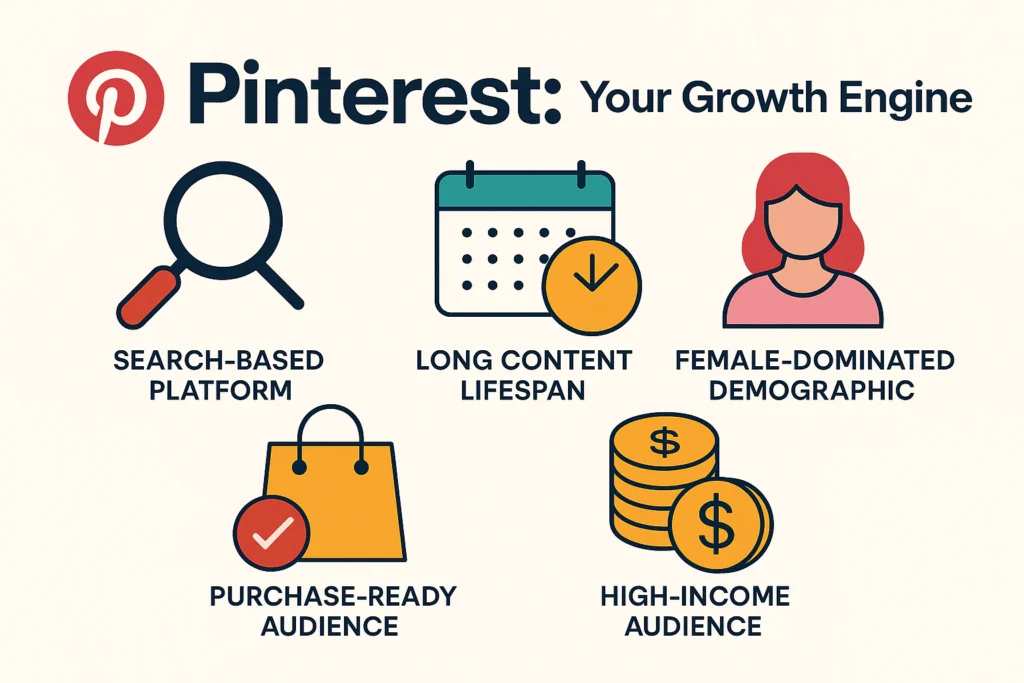
Why Pinterest traffic stands out:
- Search-based platform: users arrive with intent, bringing in Pinterest visitors ready to act on ideas.
- Long content lifespan: pins fuel Pinterest traffic for months or years, unlike the short reach of other platforms.
- Purchase-ready audience: 85% of users rely on Pinterest traffic for projects and buying decisions.
- Female-skewed demographic: about 70% of Pinterest visitors are women, while male participation rises each year. (Pinterest)
- High-income audience: 45% of Pinterest visitors earn over $100,000 yearly, giving Pinterest traffic strong purchase intent. (Bluehost India)
Pinterest acts as both a social platform and search engine, delivering strong Pinterest organic reach for businesses.
These numbers reveal the power of Pinterest traffic:
- The average Pinterest session duration is 14.2 minutes, fueling deeper Pinterest user flow.
- Pinterest drives 33% more referral traffic to shopping sites than Facebook (Pinterest)
- Over 240 billion pins saved power, with constant Pinterest engagement metrics across boards.
- 89% of users say Pinterest traffic drives shopping inspiration. (Pinterest)
Pinterest audience reach shows active engagement, with visitors ready to act on new finds.
Building Your Pinterest Foundation
Understanding How Pinterest Traffic Works
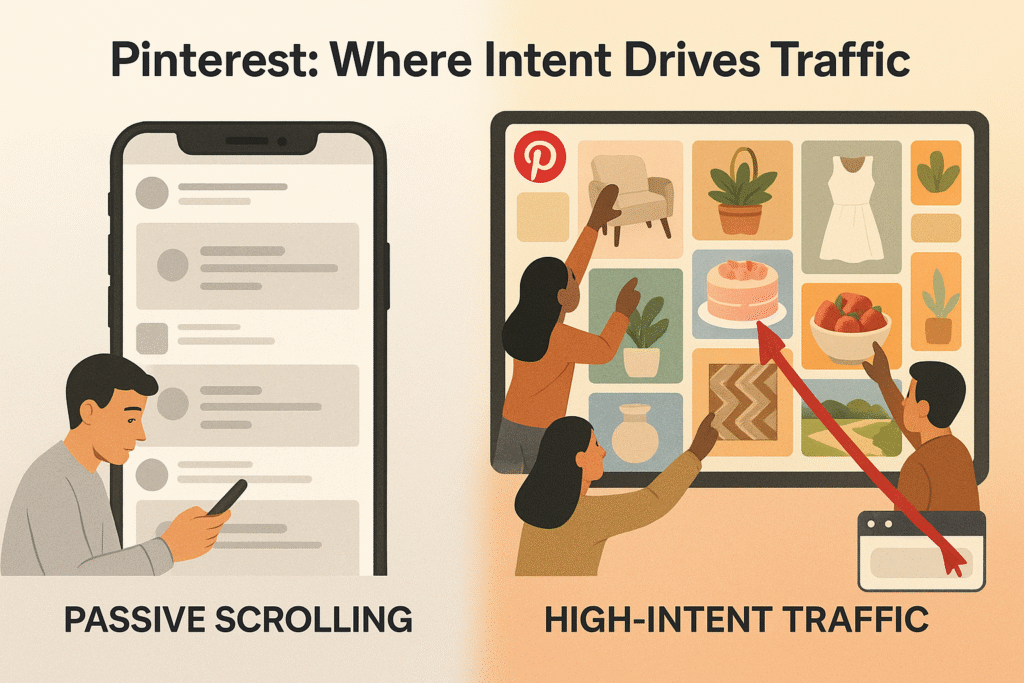
Unlike other platforms with time-based feeds, Pinterest traffic runs on relevance, pin quality, and Pinterest engagement metrics.
The traffic ecosystem on Pinterest follows this pattern:
- You publish pins that spark Pinterest pin clicks
- Pinterest search traffic and home feeds expose your pins to Pinterest visitors
- Users repin content, fueling more Pinterest board views
- Others find pins through Pinterest profile visits and boards
- The cycle builds, expanding Pinterest audience reach each time a save happens
Pinterest traffic is powerful because users arrive with intent, searching for ideas, solutions, and products. This mindset fuels higher conversion rates.
Organic Pinterest traffic drives better engagement rates, stronger Pinterest click-through rates, and lower bounce rates than paid ads, since content aligns with intent.
Traffic comparison metrics:
| Metric | Organic Pinterest | Paid Pinterest | Typical Social Media |
| Avg. Time on Site | 2:42 minutes | 1:37 minutes | 1:12 minutes |
| Bounce Rate | 51% | 64% | 76% |
| Pages Per Visit | 2.3 | 1.7 | 1.4 |
| Conversion Rate | 3.2% | 2.8% | 1.9% |
These numbers confirm Pinterest traffic delivers higher quality visitors than most platforms.
Pinterest users save content for later action, making Pinterest traffic more purchase-driven than Instagram browsing.
How the Pinterest Algorithm Shapes Traffic
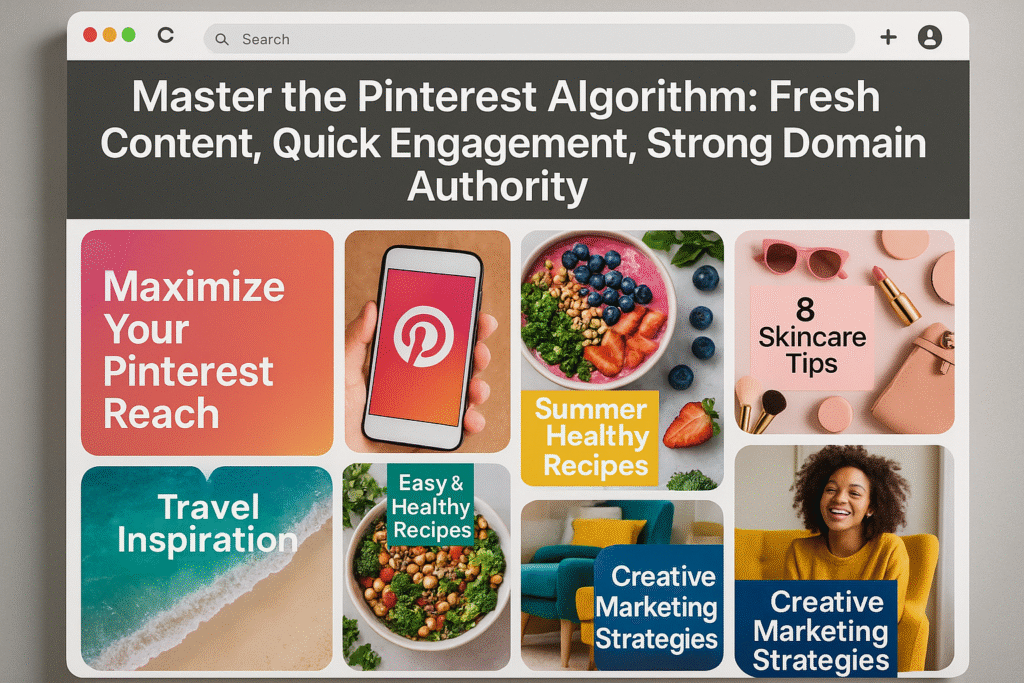
The Pinterest algorithm ranks pins based on three Pinterest traffic signals:
- Fresh content: Steady pin publishing keeps your Pinterest business account active
- Engagement velocity: Pins with fast Pinterest pin clicks and saves grow quickly
- Domain authority: Verified domains and consistent posting strengthen Pinterest traffic sources
Top-performing pins boost Pinterest traffic with strong images, helpful content, and clear overlays.
Timing boosts Pinterest audience reach, with U.S. engagement peaking 8–11 PM EST and Europe stronger midday.
Tip: Schedule pins during your target audience’s peak hours via Pinterest’s scheduler or third-party tools.
Algorithm ranking signals in detail:
Pin quality signals for Pinterest traffic:
- Image resolution (minimum 1000 x 1500 pixels recommended)
- Text overlay clarity
- Strong Click-to-save ratio (high clicks with low saves can hurt ranking)
- Description completeness (aim for 150-300 characters)
- Image resolution (minimum 1000 x 1500 pixels recommended)
- Text overlay clarity
- Click-to-save ratio (high clicks with low saves can hurt ranking)
- Description completeness (aim for 150-300 characters)
Account authority factors:
- 3-5 pins weekly
- Domain verification status
- Profile completion percentage
- Rule-compliant history
Contextual relevance markers:
- Keyword presence in pin title, description, and image text
- Board relevance
- Text recognition from pin image
- Landing page content alignment
Analyze your top 10 performing pins for patterns in posting time, visual elements, and keyword usage, then replicate these patterns in new content.
Technical SEO Mastery for Pinterest
Pinterest works as a visual search engine, and building Pinterest traffic depends on smart Pinterest SEO to connect pins with searchers.
Keyword Architecture Optimization
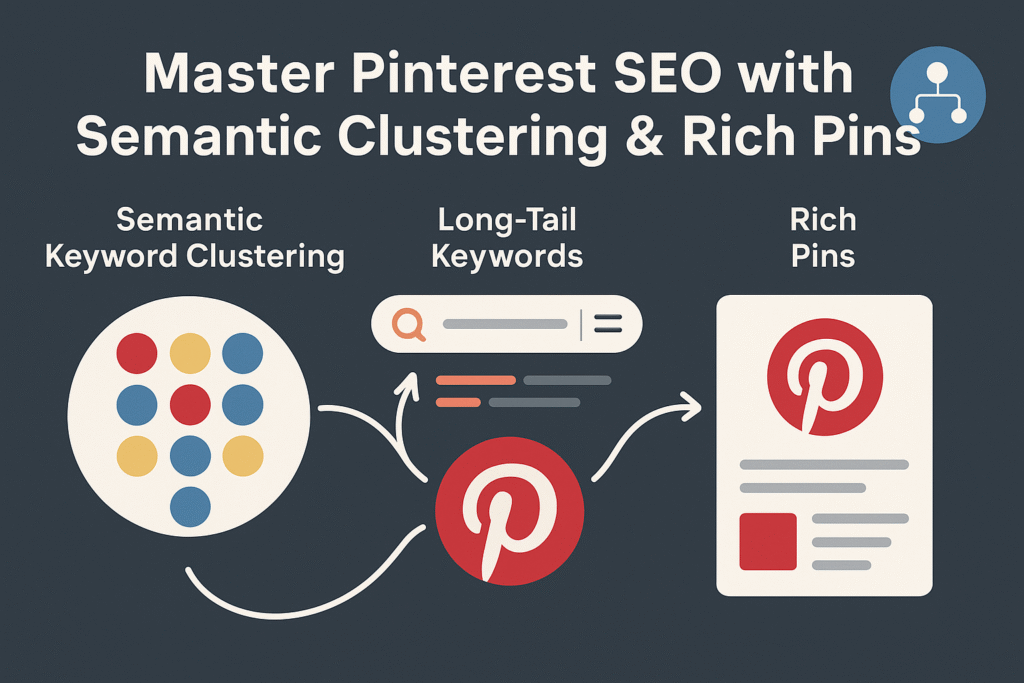
Keywords connect pins with Pinterest visitors actively looking for ideas and products. Core Pinterest SEO implementation includes:
- Semantic keyword clustering: group related terms around a central theme. For “DIY home decor,” add terms like “affordable home improvements” to broaden Pinterest traffic sources.
- Long-tail discovery: Use Pinterest autocomplete to find less competitive phrases that bring targeted Pinterest organic traffic.
- Rich Pins implementation: sync data from your site to pins, driving stronger Pinterest traffic generation and higher Pinterest engagement metrics
To set up Rich Pins:
- Add correct meta tags or JSON-LD
- Run the Pinterest Rich Pins Validator
- Apply for Rich Pins
- Once approved, pins display enhanced info
Rich Pins come in four types: product, article, recipe, and app pins. Each boosts Pinterest click-through rates and supports Pinterest traffic growth.
Profile & Board Optimization Frameworks for Traffic
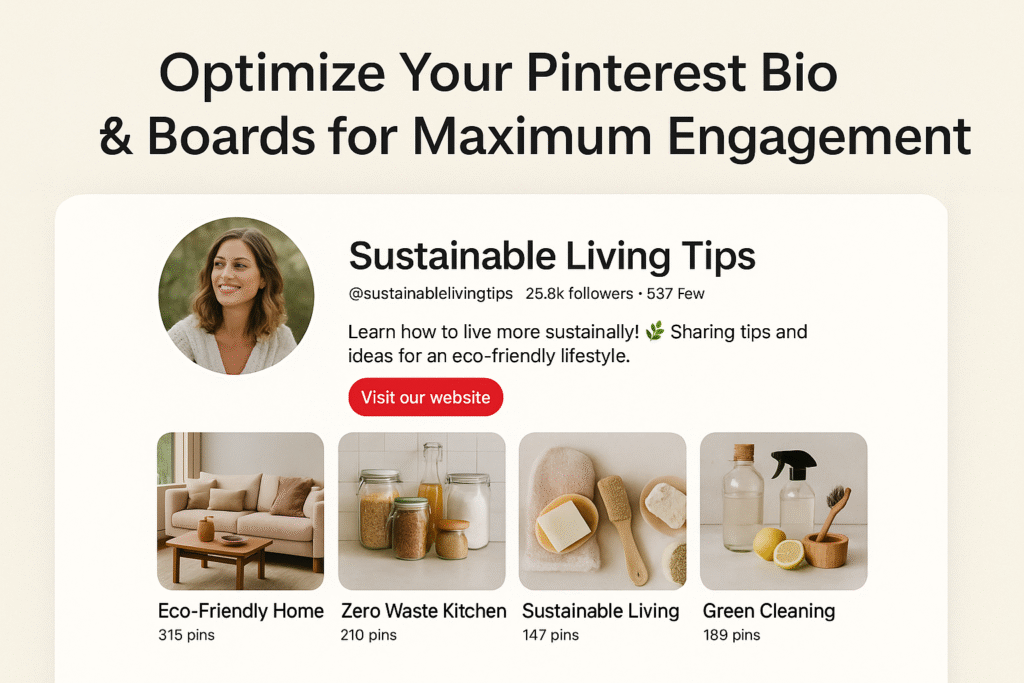
Your Pinterest profile and Pinterest boards shape how users see your content. When structured well, they expand Pinterest’s audience reach.
- Bio optimization using primary keyword + value proposition + CTA: Include Pinterest SEO keywords, your offer, and a clear action step to draw Pinterest visitors.
Profile optimization example:
Before: “Jane’s Design Studio – I love creating beautiful things!”
After: “Website Design Templates for Entrepreneurs | Custom Squarespace designs that convert visitors into customers. Get my free template guide!”
- Strategic board creation following content pillar methodology: Build Pinterest boards around focused themes. For sustainable living, boards like “Eco-Friendly Home” or “Zero Waste Kitchen” create consistent Pinterest traffic while showing niche expertise.
- Board structure strategy:
- Core topic boards: 5-7 boards representing your main content categories
- Supporting topic boards: 10-15 boards on related subtopics
- Trending topic boards: 2-3 boards focused on current industry trends
- Seasonal boards: Create and archive these based on the calendar
- Board cover A/B testing protocols for maximum profile visit conversion: Test different board cover designs, colors, and text overlays to identify what drives the most engagement. These covers act as mini-billboards for your content.
Creating Pins That Stop the Scroll
Create eye-catching pins that pull attention and send steady Pinterest traffic to your site.
Pin Design Neuro-Marketing Principles
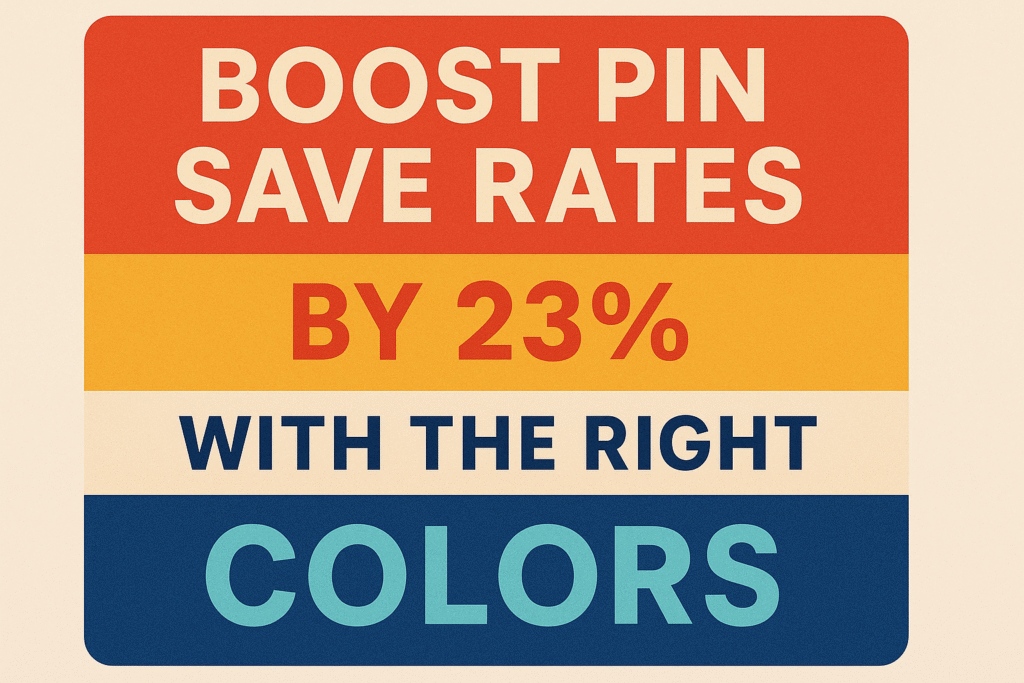
Design pins that appeal visually and drive Pinterest engagement metrics with these tested techniques:
- Color psychology combinations drive 23% higher save rates: Save rates by 23%. Warm tones like red and orange boost excitement, while cool tones like blue and green build trust. Matched color themes improve Pinterest audience reach.
Ideal pin dimensions for Pinterest Traffic
- Standard pins: 1000 x 1500 pixels (2:3 ratio)
- Square pins: 1000 x 1000 pixels (for product close-ups)
- Infographics: 1000 x 2000+ pixels (longer form content)
Product pins perform best when they show the item in use rather than isolated on a white background. This contextual presentation helps users visualize ownership.
Pin templates to create:
- How-to/tutorial template
- List content template
- Quote/inspiration template
- Product showcase template
- Before/after template
Create these templates with your brand colors and fonts, then customize for individual pins to maintain visual consistency while scaling production.
- Typography hierarchies aligned with mobile-first consumption: With most Pinterest browsing happening on phones, prioritize readability. Use clear, scannable text with a visual hierarchy – bold headlines that catch attention, followed by supporting text that guides viewers through your message. Mobile-first typography: with 85% of Pinterest traffic on phones, use bold headlines and clear
- Negative space utilization patterns from top-performing product pins: Study successful product Pins’ use of negative space (empty areas around subjects). Avoid overcrowding by using strategic white space to highlight your product or message, creating clean, professional Pins that stand out.
Video Content Production Pipeline
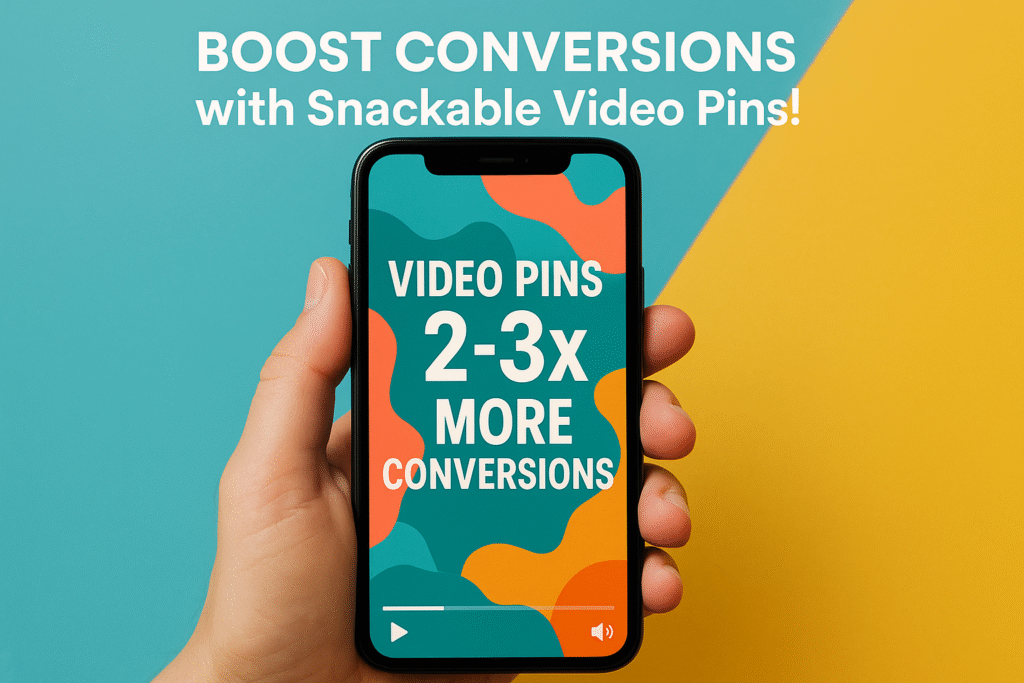
Video pins generate 2-3x more conversions than static images. Here’s how to create videos that perform:
- 6-15-second snackable video structures with text overlay best practices: Create short, engaging videos with clear text overlays, as 85% of views happen without sound. Short clips with text overlay attract Pinterest video views, since 85% of users watch without sound.
- Video hook techniques:
- Start with a question that resonates with your audience.
- Show the end result first, then how to achieve it.
- Use pattern interrupts (unexpected visuals or movements).
- Begin with a compelling statistic or surprising fact.
- Multi-format repurposing system for YouTube Shorts → Idea Pins: Maximize your content by transforming YouTube Shorts into Idea Pins. Extract compelling segments from longer videos for Pinterest, saving time while reaching new audiences and boosting organic traffic.
- Closed captioning optimization for 85% sound-off viewing: With most Pinterest users watching silently, captions are essential. They ensure accessibility and message delivery in any viewing environment.
Content Strategy That Drives Consistent Traffic
Consistent content built for user intent fuels steady Pinterest traffic and long-term growth.
Evergreen Content Optimization

Evergreen pins deliver Pinterest traffic volume long-term, forming a base for growth. A Pinterest board curation framework helps guide this.
- 80/20 original vs curated content ratio maintenance:80% original pins and 20% curated posts from related creators. This builds Pinterest engagement metrics and makes boards trusted sources.
- Seasonal content calendar synced with Google Trends data: align pins with search patterns from Google Trends. Publish summer ideas in May or holiday pins in November to capture Pinterest’s organic reach.
Seasonal content schedule example:
| Season/Holiday | Start Pinning | Peak Interest | Content Types |
| Valentine’s Day | December 15 | January 15-February 10 | Gift guides, recipes, decor |
| Summer | March 15 | April 15-May 30 | Activities, travel, recipes |
| Back to School | June 20 | July 15-August 20 | Organization, lunches, fashion |
| Halloween | August 15 | September 10-October 25 | Costumes, decor, treats |
| Christmas | September 15 | October 15-December 15 | Gifts, decor, traditions |
- Pinterest Trends integration for predictive content planning: Use Pinterest Trends to spot early topics and create pins before competitors.
Content ratio planning:
- 60% educational content (how-tos, guides, tips)
- 25% inspirational content (ideas, quotes, possibilities)
- 15% promotional content (products, services, offers)
This balance provides value to your audience while still promoting your business objectives.
Hashtag & Community Strategy
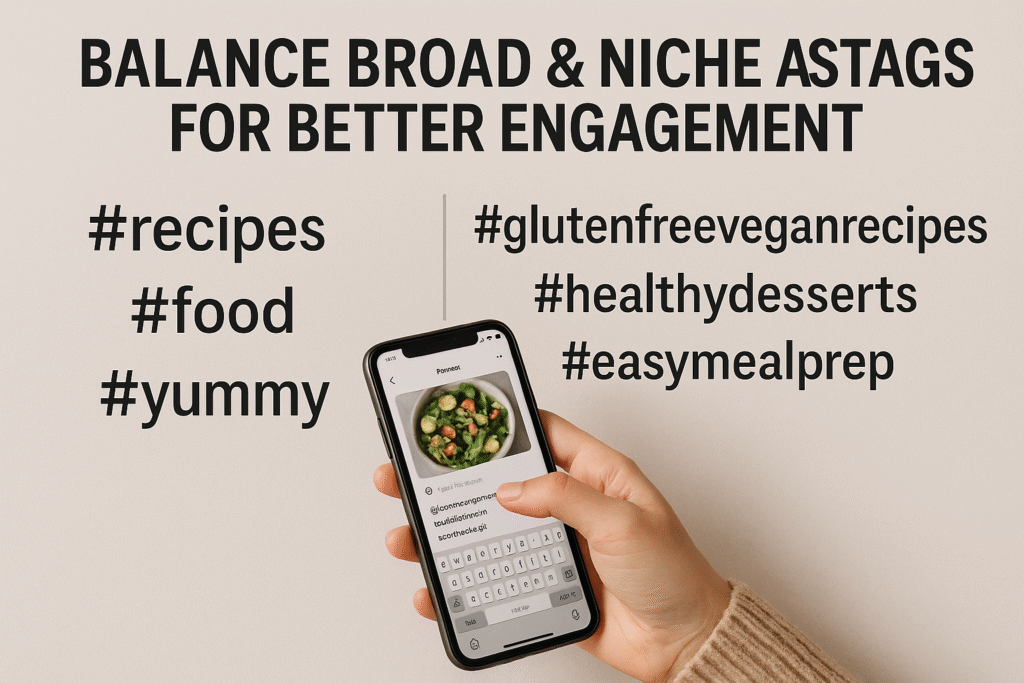
Strategic hashtag use categorizes content, enhances search visibility, and builds community. Advanced hashtag research approach:
- Niche-specific vs broad-reach tag balancing: Hashtags organize pins, improve visibility, and expand Pinterest audience reach. Use 3–5 tags per pin: broad tags mixed with niche-specific ones, like #glutenfreeveganrecipes. You can simplify this process by using our Hashtag Generator Tool for Pinterest to discover the right mix of niche and broad hashtags.
- Branded hashtag development for UGC campaigns: Branded hashtags spark UGC campaigns, building community and repeat Pinterest traffic.
- Group board participation protocols driving follower growth: Group boards expand visibility. Join niche boards, share pins, and engage with others to grow Pinterest board views.
Finding group boards:
- Use PinGroupie.com to search for boards in your niche
- Check what boards your competitors contribute to
- Look at the profiles of influencers in your field
- Search Pinterest for keywords + “group board”
Advanced Growth Hacking Techniques for Pinterest Traffic
Improve your Pinterest strategy with data-driven approaches and strategic collaborations.
Pinterest Analytics Deep-Dive
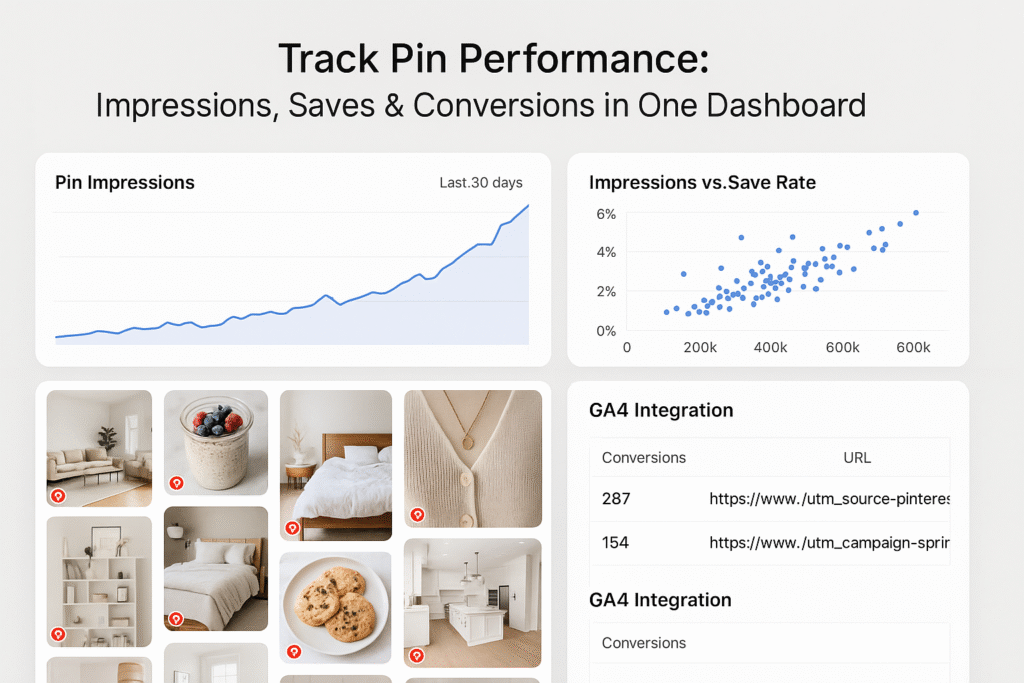
Track Pinterest pins performance with focused metrics:
- Custom dashboard creation tracking: Monitor pin impressions versus save rates. Fast impressions plus saves signal strong Pinterest engagement metrics.
- Conversion tracking with UTM + GA4: Connect Pinterest activity to website results using UTM parameters on all shared links. These URL tags help Google Analytics 4 track traffic sources.This connects Pinterest traffic sources to purchases, sign-ups, and conversions.
Key metrics to track:
- Impression velocity: how quickly pins gain views after publishing
- Save rate: saves divided by impressions, showing pin strength in Pinterest engagement metrics
- Click-through rate (CTR): clicks divided by impressions, measuring Pinterest traffic quality
- Conversion rate: actions taken on your site after Pinterest traffic arrives
Success benchmarks by industry:
| Industry | Average CTR | Average Save Rate | Average Conversion |
| Fashion | 1.8% | 4.2% | 2.9% |
| Home Decor | 2.3% | 5.7% | 3.1% |
| Food & Recipes | 3.1% | 6.4% | 2.7% |
| DIY & Crafts | 2.7% | 7.2% | 3.5% |
| Business & Finance | 1.5% | 3.1% | 2.2% |
UTM structure for Pinterest:
?utm_source=pinterest&utm_medium=social&utm_campaign=spring_content&utm_content=blue_dress_pin(This structure allows you to track performance by campaign and specific pin content.)
- Content gap analysis using audience data: Leverage Pinterest’s audience insights about interests and demographics to identify content opportunities. Create targeted Pins that address uncovered audience needs to drive more organic traffic.
Collaborative Growth Frameworks
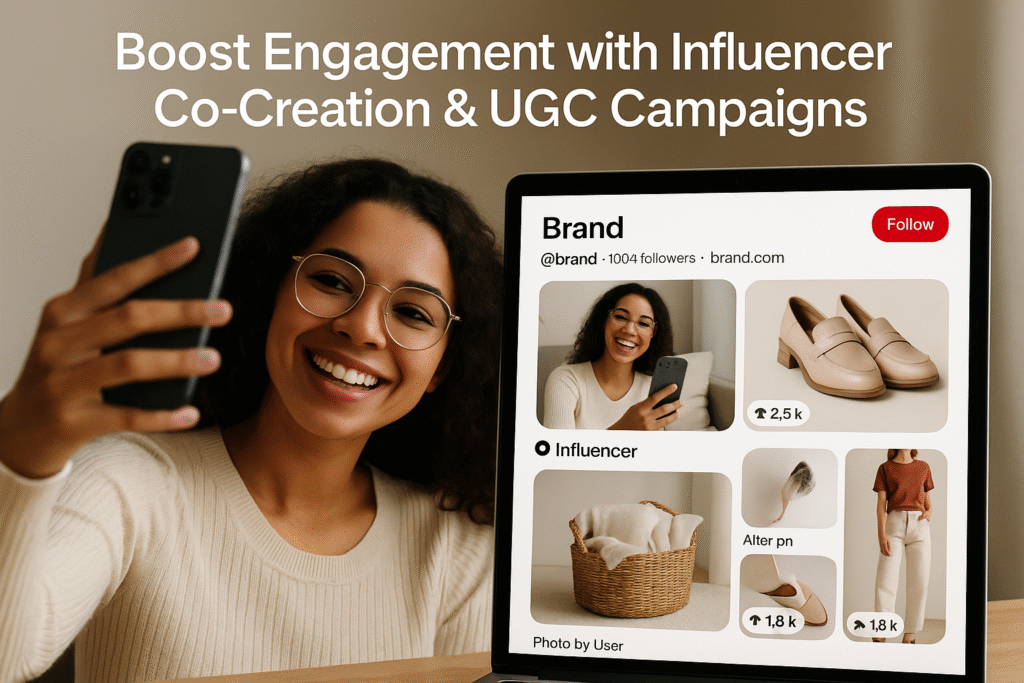
Partnerships expand reach and build trust:
- Influencer co-creation systems: Host Pin takeovers. Influencers add content to your profile, earning results-based pay tied to saves and clicks. This brings new Pinterest audience reach.
- UGC campaign integration: Invite customers to share product use. Add real photos to product pins for proof and stronger Pinterest click-through rates.
- UGC prompt ideas:
- “Show us how you styled our product.”
- “What’s your favorite way to use our [item]?”
- “Share your before & after using our service.”
- “Tag us in your recreations of our recipes.”
- Pinterest-optimized affiliate programs: Provide templates and pin guidelines so affiliates can share products effectively. This boosts Pinterest referral traffic through their networks.
Turning Pinterest Traffic Into Results
Create clear paths from discovery to action so Pinterest traffic converts into loyal customers.
E-Commerce System for Pinterest Traffic
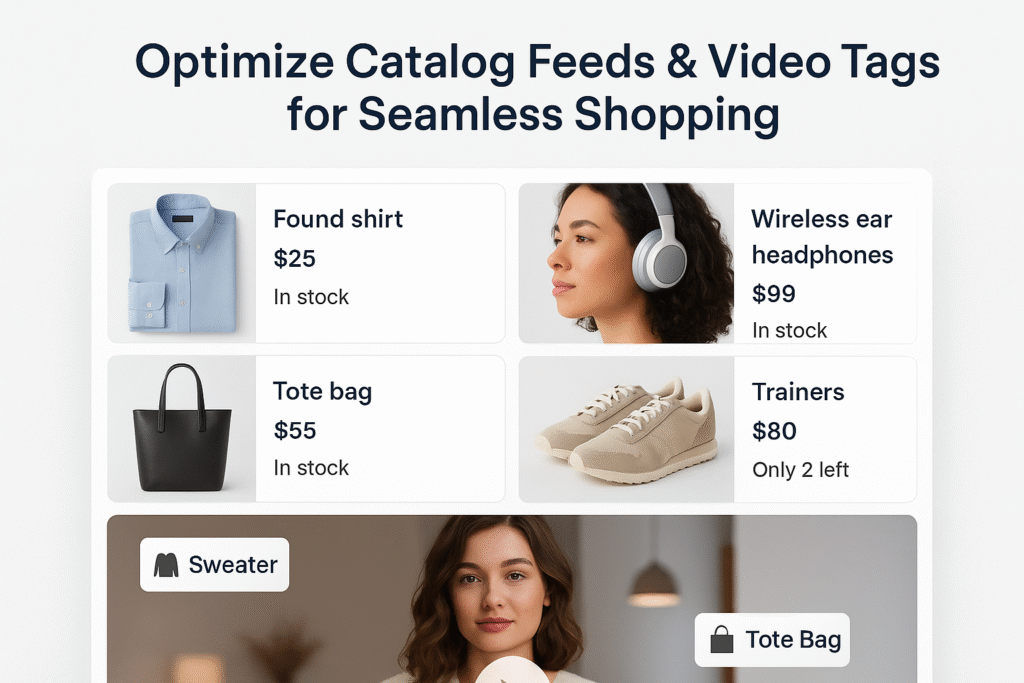
For sellers, Pinterest acts as both an inspiration hub and a storefront. Build your Pinterest shopping setup with:
- Catalog feeds for Rich Pins: Prepare product feeds to qualify for Rich Pins. These display price and availability, making purchases seamless for Pinterest visitors.
- Product tag placement strategies in video Pins: Add clickable tags so viewers can explore and purchase instantly, converting Pinterest traffic into sales.
Product feed requirements:
- Business account with claimed website
- Properly formatted product data
- Title, description, price, availability, image, link
- Submit via Pinterest Catalog Manager
- Daily updates recommended
- Dynamic retargeting workflows for abandoned carts: Re-engage cart abandoners with promoted pins featuring the products they viewed, recovering lost sales through targeted Pinterest referral traffic.
Lead Generation Systems for Pinterest Traffic
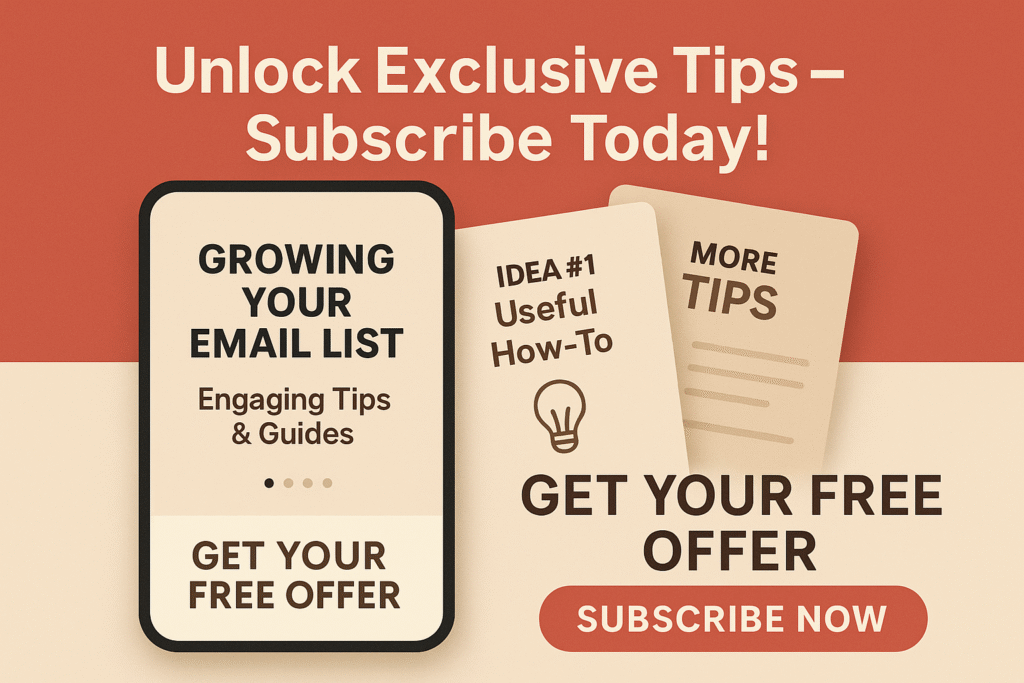
Pinterest can also grow email lists and leads with the right systems:
- Lead magnet Pin design formulas: Design pins with strong CTAs tied to free offers.
High-converting lead magnet types for Pinterest:
- PDF checklists and worksheets
- Mini-courses and email challenges
- Templates and swipe files
- Quizzes and assessments
- Resource libraries
- Free consultations/audits
Lead magnet pin example:
Title: “5-Day Email Marketing Template Pack (Free Download)”
Description: “Boost your campaigns with 5 templates proven to lift open rates by 37%. Perfect for service brands nurturing leads. Download at [URL].#emailmarketing #businesstips #marketingtemplates”
- Idea Pin → Email list growth hacking: Use multi-page Idea Pins for quick guides. Add clear CTAs to capture Pinterest visitors into signups.
- Promoted Pin remarketing for organic engagers: Target users who already engaged with saves, clicks, or Pinterest profile visits. Warm leads like these convert better into email subscribers.
Remarketing sequence:
- Initial pin → blog post or lead magnet
- 3-7 days later → case study content
- 7-14 days later → testimonial content
- 14-21 days later → offer/conversion content
A well-executed Pinterest lead generation strategy typically converts at 3-5%, significantly higher than many other social platforms.
Performance Optimization Cycle
Regularly monitor and adjust your Pinterest strategy based on performance data for continued growth.
Core Metric Tracking Framework

Structure your Pinterest Analytics KPIs dashboard to measure performance:
- Weekly impression share growth tracking: check if pins gain visibility week by week. Falling impressions may signal content changes are needed.
- Engagement rate benchmarks by content format: compare static, video, and Idea Pins using saves, clicks, and comments. Focus on formats that bring the strongest Pinterest engagement metrics.
- Click-through rate optimization playbook: Monitor CTR to see pin effectiveness. Test new headlines, CTAs, and visuals to raise Pinterest traffic volume.
Continuous Improvement Systems of Pinterest
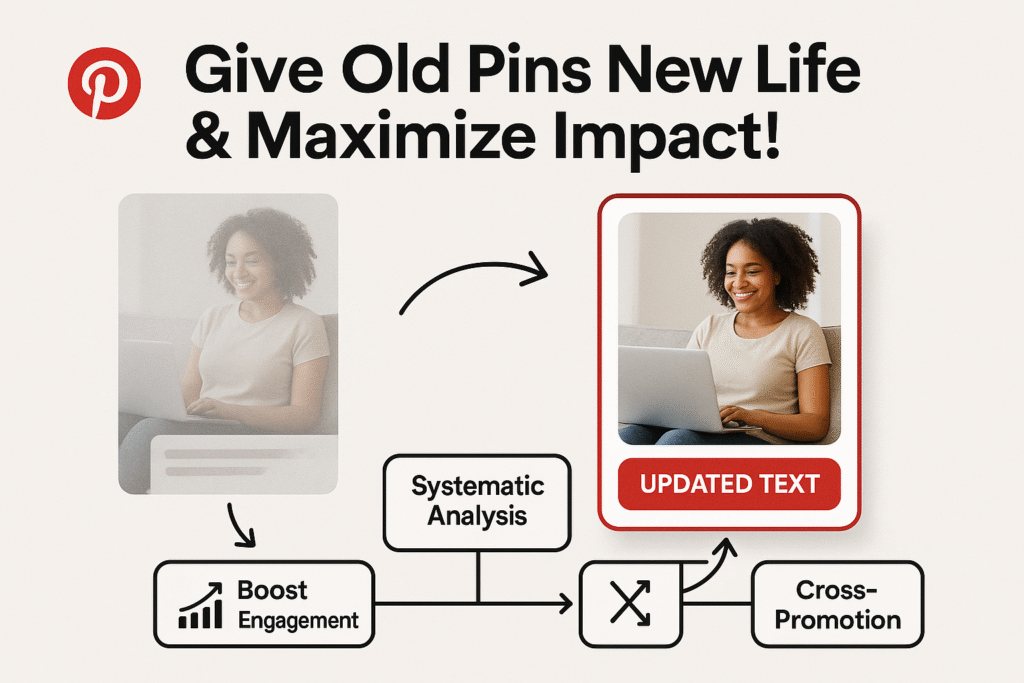
Keep Pinterest content fresh and diagnose performance issues with these methods:
- Content refresh cycle on Pinterest:update older pins with new images, revised descriptions, or extra pin versions linking to the same page. This keeps content relevant and drives more Pinterest organic traffic.
Pinterest organic traffic Workflow:
- Export Pinterest Analytics data
- Sort by lowest CTR or engagement rate
- Pick pins with strong topics but weak results
- Redesign visuals and rewrite descriptions
- Republish at peak times
- Compare performance
- Underperforming Pin diagnostic workflows:Review underperforming pins. Check design quality, keyword targeting, CTA strength, board choice, landing page match, and mobile readability.
- Amplify Pinterest Winner: Cross-promote high-performing pins on blogs, other platforms, or ads to scale Pinterest traffic sources.
Troubleshooting checklist for weak pins:
- Is the image clear and high-quality?
- Does the text overlay state the benefit clearly?
- Is the description keyword-rich?
- Is the pin shared on relevant boards?
- Does the landing page match pin promise?
- Is the pin built for mobile users?
Enterprise-Level Scaling for Pinterest Traffic
To grow at scale, streamline workflows and connect Pinterest with broader marketing.
Team Workflow for Pinterest Traffic Growth
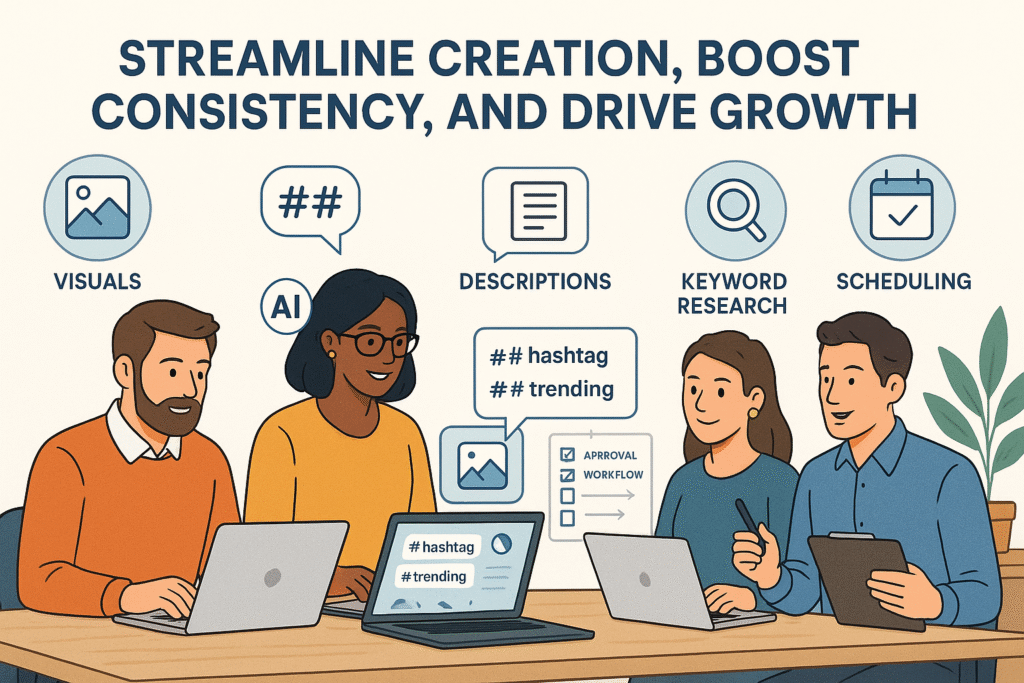
Organize your pipeline so content flows smoothly:
- Cross-functional team roles/responsibilities matrix: Define clear team responsibilities for visuals, descriptions, keyword research, and scheduling to maintain efficiency and consistency.
Team responsibility matrix:
| Role | Responsibilities | Tools | Deliverables |
| Content Strategist | Keyword research, content planning | Pinterest Trends, Google Keyword Planner | Monthly content calendar |
| Designer | Pin creation, image editing | Canva, Adobe Creative Suite | Pin templates, board covers |
| Copywriter | Pin descriptions, calls-to-action | Google Docs, Hemingway App | SEO-optimized descriptions |
| Pinterest Manager | Publishing, community engagement | Tailwind, Pinterest Business | Weekly performance reports |
| Analytics Specialist | Performance tracking, optimization | Google Analytics, spreadsheets | Data insights, recommendations |
- AI-assisted creation tools for scale: generate pin text, hashtag sets, visuals, and titles faster while keeping Pinterest traffic quality intact.
- Approval workflows maintaining brand consistency: Approval systems keep brand voice consistent, helping build recognition and trust while strengthening Pinterest organic traffic.
Recommended tool stack:
- Design: Canva Pro or Adobe Creative Cloud
- Scheduling: RecurPost
- Analytics: Pinterest Analytics + Google Analytics
- Collaboration: Trello or Asana for workflow management
- SEO: Keywords Everywhere or SEMrush for research
Multi-Channel Integration
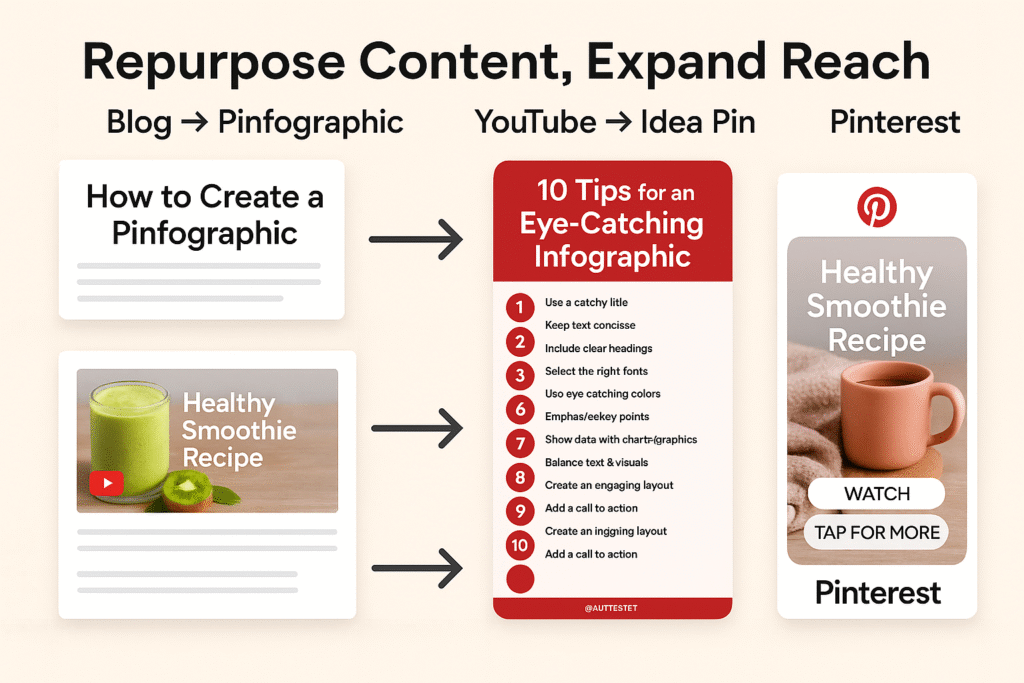
Repurpose content across platforms with these integration strategies:
- Blog post → Pinfographic conversion process: convert blog posts into visual summaries that send Pinterest visitors back to full articles.
Blog content multiplier system:
- Write a comprehensive blog post
- Create 5-7 pins highlighting different aspects of the content
- Schedule pins to publish over a 2-3 week period
- Track which angles perform best
- Create follow-up content based on top performers
- YouTube video → Idea Pin repurposing framework: cut short clips into pins with overlays and CTAs. This links video and Pinterest traffic together.
- Email newsletter → Pinterest content syndication: Share your Pins and boards in newsletters to engage email subscribers with your Pinterest content, expanding audience reach.
Cross-promotion strategy:
- Feature “Pin of the Week” in your newsletter.
- Include an “As Seen on Pinterest” section on your website.
- Add Pinterest follow buttons.
- Bonus pins tied to email lead magnets.
- Create a Pinterest-only landing page.
The Pinterest Growth Flywheel
A well-built system on Pinterest creates lasting momentum. With consistent effort, Pinterest traffic compounds into qualified website visits that cost nothing in ads.
Pinterest marketing rewards persistence. Each new pin strengthens the cycle, delivering ongoing Pinterest traffic and growth year after year.
Pick one tactic from this guide and put it into motion today. The sooner you act, the sooner Pinterest traffic begins working for your brand.
Frequently Asked Questions
1. How can I make my Pinterest profile stand out to potential followers?
Write a clear bio with keywords and a call-to-action. Add polished boards with curated content and pin consistently. This raises visibility in the Pinterest search bar and grows Pinterest traffic.
2. What are some common mistakes to avoid when creating Pinterest Pins?
Skip blurry visuals and overcrowded layouts. Use high-resolution, mobile-friendly pins with clean negative space. This improves readability and attracts more Pinterest traffic and blog visits.
3. Can I use Pinterest for my service-based business?
Yes. Share tips, resources, and case studies that solve audience problems. This attracts Pinterest visitors, builds trust, and encourages exploration of your services, driving more qualified Pinterest traffic.
4. Should I post the same Pin multiple times?
Yes, re-pin top performers. Refresh descriptions or align them with seasonal themes. Post across different boards to reach broader audiences and grow Pinterest traffic without oversharing.
5. How can I measure if my Pinterest strategy is working?
Track impressions, saves, click-through rates, and conversions. Use Pinterest Analytics to see top performers. Regular monitoring reveals how Pinterest traffic sources are growing and how much blog traffic results.
6. How do I find relevant group boards on Pinterest?
Use PinGroupie or search keywords + “group board” in Pinterest. Joining niche boards and saving relevant pins expands reach, boosts Pinterest organic traffic, and builds stronger Pinterest audience reach.
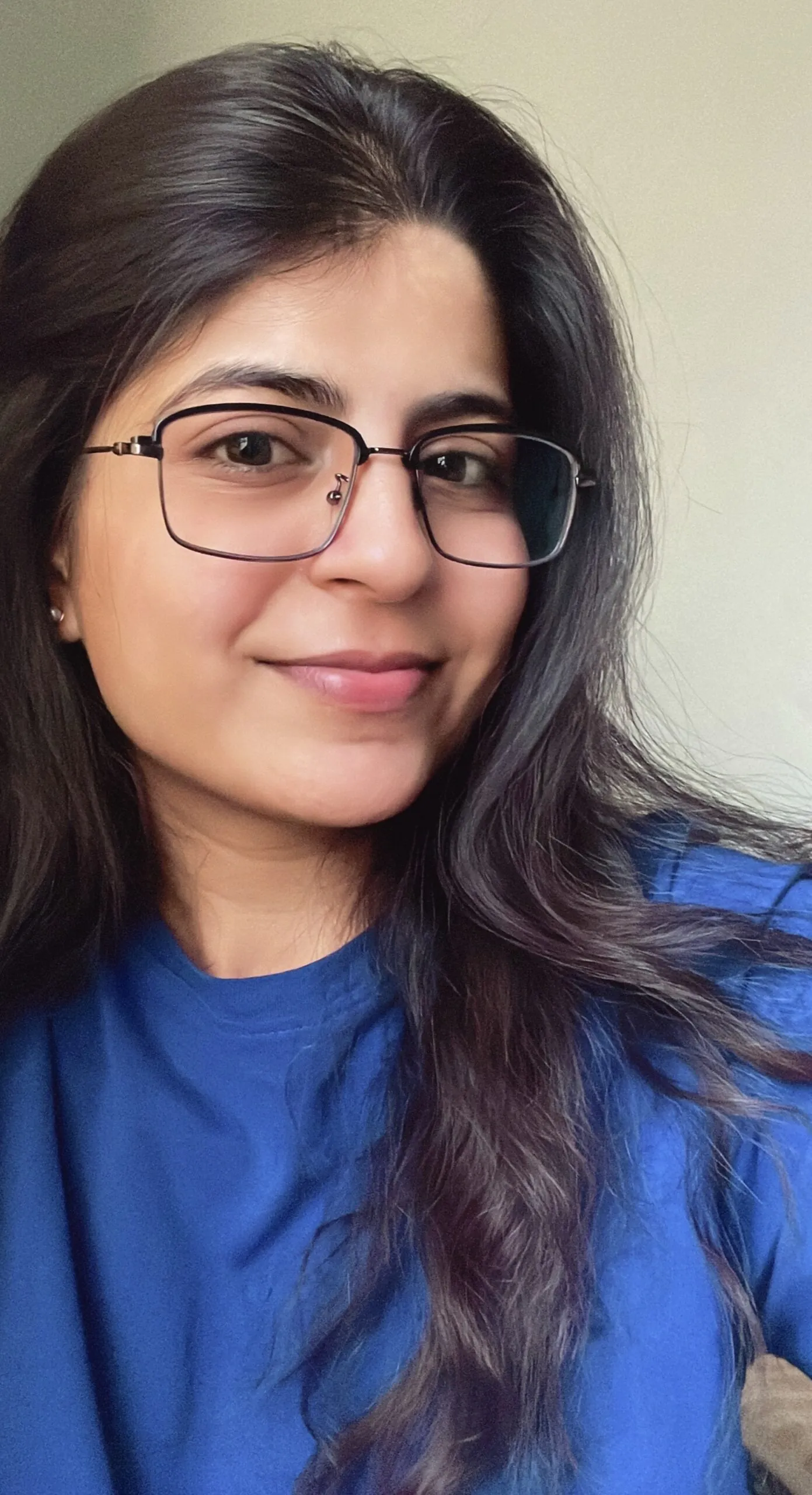
Shalini Nagar is an experienced content writer with a proven track record of creating diverse and engaging content across various formats. With years of expertise in crafting blogs, articles, she excels at delivering compelling narratives tailored to different audiences.





